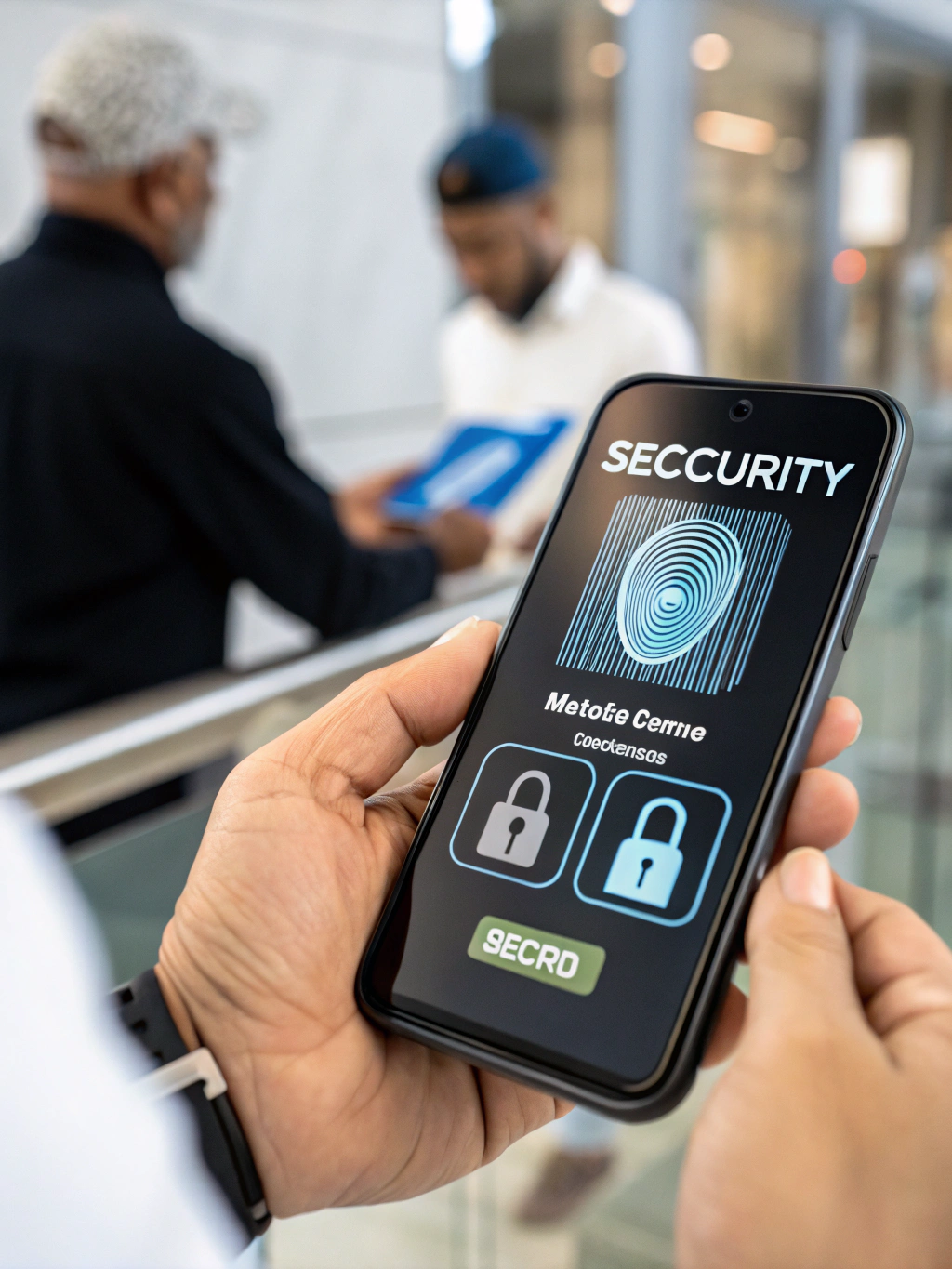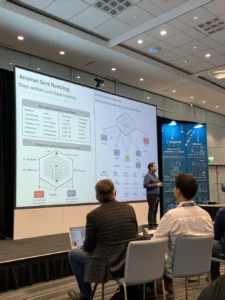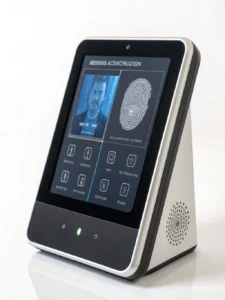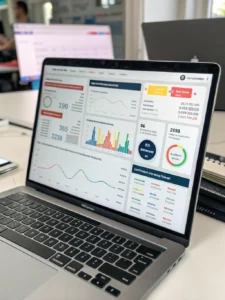Beyond Passwords: How Biometric Authentication Enhances Multi-Factor Security
Navigating the Future: Combining Biometrics, AI, and Smart Investments The world is evolving at an unprecedented pace. From the rapid growth of cryptocurrency to the rise of sophisticated artificial intelligence agents, and the constant need for robust security, staying ahead requires a proactive approach. One critical element for securing our digital lives and financial futures is a well-defined biometric authentication multi factor strategy. In this blog post, we’ll delve into the converging trends shaping the future – exploring how biometric security, passwordless authentication, AI, and alternative investments are intertwining to create a new paradigm for security, efficiency, and growth. We will unpack how this holistic approach is crucial for both individuals and institutions navigating the complexities of a rapidly changing world. The Evolution of Security: Beyond Passwords For years, passwords have been the cornerstone of digital security. But let’s face it – they’re vulnerable. Data breaches are rampant, phishing attacks are increasingly sophisticated, and remembering countless complex passwords is a logistical nightmare. The tide is turning towards more secure and user-friendly alternatives. Passwordless authentication is gaining massive traction, offering a seamless and highly effective way to verify identity. One of the most prominent advancements in this space is biometric authentication. Unlike passwords, biometrics rely on unique biological traits – like fingerprints, facial features, or even voice patterns – making them significantly harder to compromise. But simply using a fingerprint isn’t always enough. A truly robust approach requires layering multiple security measures. That’s where a biometric authentication multi factor strategy comes into play. What is a Biometric Authentication Multi Factor Strategy? A biometric authentication multi factor strategy combines the accuracy of biometric verification (like facial recognition or fingerprint scanning) with other authentication methods. This layered security approach significantly enhances protection against unauthorized access. Essentially, it means requiring more than just a fingerprint scan to log in. For example: Biometric + PIN: A fingerprint scan followed by a PIN code. Biometric + One-Time Password (OTP): Biometric verification combined with an OTP sent to your registered device. Biometric + Device Recognition: Utilizing device characteristics for additional verification. This multi-layered technique drastically reduces the risk associated with compromised biometric data or phishing attempts. It’s a more resilient solution compared to relying solely on a single authentication factor. The Rise of AI Agents and Automation: Enhanced Security and Investment Strategies Artificial intelligence (AI) is no longer a futuristic concept; it’s actively reshaping industries, including cybersecurity and finance. AI agents, in particular, are poised to revolutionize how we approach security and investment. AI-Powered Threat Detection: AI algorithms continuously analyze patterns and behaviors to identify potential security threats in real-time, far exceeding the capabilities of traditional security systems. This proactive approach is crucial in mitigating sophisticated cyberattacks. Automated Risk Assessment: In the investment world, AI can automate risk assessment, identifying potential vulnerabilities and optimizing portfolio allocation. Smart Contract Auditing: AI agents can automatically audit smart contracts in the blockchain space, identifying potential vulnerabilities before deployment. The integration of AI agents with biometric security creates a powerful synergy. AI can learn user behavior patterns, adapting security protocols dynamically and flagging anomalies that might indicate malicious activity. This constant learning and adaptation provide an unparalleled level of protection. Crypto Markets and the Future of Digital Ownership The cryptocurrency market has exploded in recent years, offering unprecedented opportunities for investment and innovation. However, it also presents unique security challenges. The decentralized nature of blockchain technology makes it particularly susceptible to hacking and scams. Biometric authentication plays a pivotal role in securing crypto wallets and transactions. Requiring biometric verification for accessing crypto wallets significantly reduces the risk of unauthorized access and theft. Passwordless authentication further enhances this security, eliminating the need for potentially compromised passwords. Furthermore, alternative investment strategies like Decentralized Finance (DeFi) are gaining momentum. DeFi platforms use smart contracts to automate financial processes, but these contracts are vulnerable to exploitation. AI-powered smart contract auditing, driven by AI agents, is essential for safeguarding these investments. Alternative Investments and Diversification Traditional investment strategies often focus on stocks and bonds. However, alternative investments offer opportunities for greater diversification and potentially higher returns. These include: Real Estate: Providing tangible assets and potential rental income. Private Equity: Investing in privately held companies with high growth potential. Commodities: Investing in raw materials like gold, oil, or agricultural products. NFTs (Non-Fungible Tokens): Opening new avenues for digital ownership and investment. The integration of biometric security into these alternative investment platforms builds trust and safeguards user assets. For example, secure access to private equity investment portals, or the verification of ownership for NFTs, all benefit from robust biometric authentication protocols. Feature Biometric Authentication Password-based Authentication Passwordless Authentication Security Level High (difficult to replicate) Low to Medium (vulnerable to hacking) Medium to High (depending on the method) User Experience Convenient, frictionless Can be cumbersome and require frequent resets Seamless and easy to use Cost Higher initial investment Low Low to Medium (depending on the implementation) Vulnerability Biometric data breaches are possible but complex Phishing, brute-force attacks, password reuse Phishing resistance; depends on risk management Example Methods Fingerprint, Facial Recognition, Voice Recognition Username/Password, Security Questions Fingerprint, Facial Recognition, OTP via device Looking Ahead: The Future is Secure and Intelligent The convergence of biometric authentication multi factor strategy, AI, and alternative investments is creating a future where security and efficiency are seamlessly integrated. As technology continues to evolve, we can expect even more sophisticated security measures and innovative investment strategies to emerge. The future demands a holistic approach where digital identity is protected by robust biometric protocols, while AI agents optimize investment decisions and safeguard digital assets. What are your thoughts? How do you see these trends impacting your own security and investment strategies? Share your comments and insights below! Also, don’t hesitate to explore related resources, such as Okta’s guide to multi-factor authentication.
Share this content:














Post Comment